Bei diesem Earthcache treten gleich zwei geologische Besonderheiten auf. Zum Einen sind es die unterirdischen Schwelbrände und zum Anderen die vielen Fossilien.
Jahrzehntelang wurde hier der Abraum aus dem Steinkohlebergbau zu einem künstlichen Berg geformt.
Ein Phänomen, was man auf der Halde beobachten kann, sind die Schwelbrände. Durch den Druck der Gesteinsmassen im Inneren des Haldenkörpers entsteht Wärme, so dass die Kohlenreste verschwelen. Während die Dämpfe nach oben steigen gehen diese verschiedene chemische Verbindungen ein. An der Oberfläche setzen sie sich in Form von Kristallen und Belägen ab. Hierbei handelt es sich um Salmiak(NH4CL) und Schwefel(S).
Mit den Bergmassen und Kohlenresten aus den Schächten kamen auch Fossilien und Mineralien auf diese Halde. Pflanzenfossilien sind am häufigsten anzutreffen. Die meisten davon sind Leitfossilien, d. h. sie kamen hauptsächlich in einer bestimmten Erdformation vor. Danach wurden sie seltener oder starben aus. Die größten waren Schachtelhalmgewächse, Siegel-, Schuppen- und Farnbäume. Farne und Samenfarne waren meist kleiner im Wuchs. Tierfossilien sind weniger bekannt. Selten findet man Muschelkrebse (Ostracoden und Conchostracen), Libellen, Spinnen und Tausendfüßer. Einige Endglieder eines Tausendfüßers sind auf dieser Halde zum ersten Mal im Mai 2005 gefunden worden. Mit etwas Glück kann man hier Fossilien in den Toneisensteinablagerungen finden.
Hier oben kann man den Schwefel schon riechen, ausserdem ist an den Stellen, wo es qualmt, die Erde besonders warm und man kann viele schöne sowie auch seltene Steine entdecken.
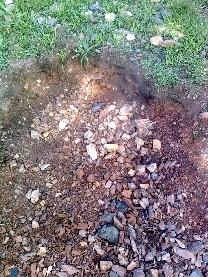
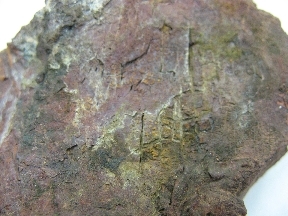
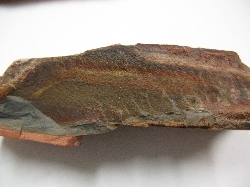
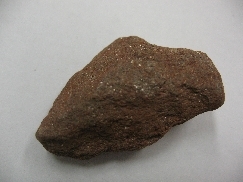
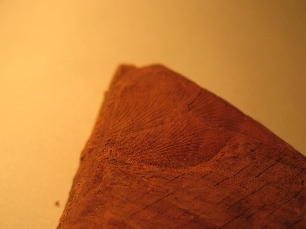
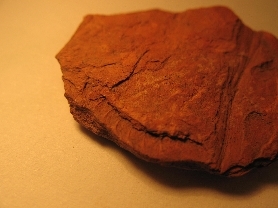
Bitte verlasst die Wege nicht! Das Gelände ist sehr abschüssig!
Noch eine Info:
Die Schüttung der Halde auf einem Bergrücken war sehr untypisch und hat schon seit vielen Jahrzehnten die Wissenschaftler der TU Dresden, Außenstelle Forstwirtschaft in Tharandt, zur Begrünung beschäftigt, auf der wieder verwendungsfähige Erkenntnisse für andere Haldenlandschaften, besonders in Zwickau und der Wismut, aber auch international, gesammelt werden konnten. Die Halde hebt sich als Bergkuppe von der durch Bergrücken profilierten Vorgebirgslandschaft markant ab. Dies fand schon im Regionalentwicklungsplan Chemnitz-Erzgebirge Beachtung.
Nun zu eurer Aufgabe:
1. Wie hoch ist die Temperatur in einer Tiefe von 12m im Berg?
2. In welcher Höhe befindet ihr euch ca. bei den o.a. Koordinaten? 512,47m ist falsch!
3. Wie wird die Schwefelhalde offiziell genannt?
Macht bitte ein Foto von euch mit GPS an den o.a. Koordinaten. Nach neuesten Richtlinien von GC ist das jedoch keine Logbedingung!
Schickt eure Antworten bitte an Impossible-Idiots@web.de
Euer Bild ladet ihr bitte mit dem Log hoch.
Ihr dürft sofort loggen. Wir melden uns falls etwas nicht stimmt. Logs ohne Email werden kommentarlos gelöscht!
English:
Sulfur stockpile - in the Travel Past
In this Earth Cache occur at two geological features. On the one hand are it underground smoldering fires and the many others Fossils.
For decades this was the spoil from the Coal mining on an artificial hill formed.
A phenomenon which can be observed in the heap are the Smoldering fires. The pressure of the rock mass inside the Dump body generates heat, so that carbonize the carbon residues. While the fumes go climb up these different chemical compounds. On the surface they sit in Form of crystals and surfaces from. It is Ammonium chloride (NH4Cl) and sulfur (S).
Came to the mountain masses and carbon residues from the shafts and Fossils and minerals on this heap. Plant fossils are found most frequently. Most of them are index fossils, that they were mainly in a particular earth formation before. Thereafter, they were rare or died out. The largest were horsetails, seals, Shed and fern trees. Ferns and seed ferns were mostly small in stature. Animal fossils are so well known. Rarely does one Crustaceans (ostracods and Conchostracen), dragonflies, spiders and Millipedes. Millipedes are a few end-members on this Stockpile has been found for the first time in May 2005. With a little luck Fossils can be here in the Toneisensteinablagerungen find.
Up here you can the Sulfur smell it, is also in the places where it smokes, particularly warm the earth and you can see many beautiful and well discover rare stones.
Please do not leave the path! The terrain is very steep!
One more info:
The bulk of the stockpile on a mountain ridge and was very untypical for many decades, the scientists of TU Dresden, forestry branch in Tharandt, the greening busy on the return reusable lessons for other stockpile landscapes, particularly in Zwickau and the bismuth, but also internationally, could be collected. The stockpile raises as a hilltop of the profiled by ridge Foothills from striking. This was already in Regional Development Plan Chemnitz-Erzgebirge attention.
Now to your task:
1. How high the temperature is in a depth of 12 m in mountain?
2. At what altitude it is about you at the above Coordinates? 512,47m is wrong!
3. How is the sulphur waste dump called official?
Please make a photo of you with GPS coordinates to the above. After latest guidelines from the GC is not a log condition!
Please send your answers to Impossible-Idiots@web.de
Your picture load her please with the log high.
You can log immediately. We will contact you if something is wrong. Logs without email will be deleted! .



